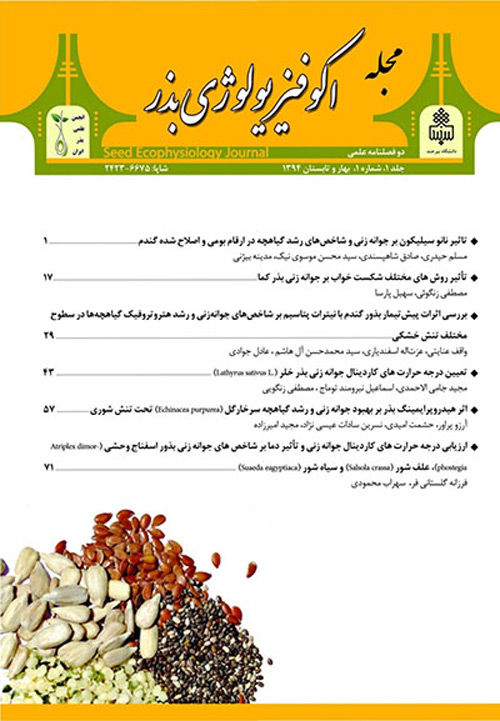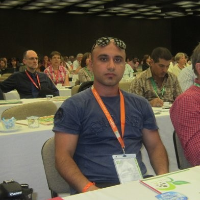Effects of breaking dormancy on seed germination characteristics in two medicinal plants species Allium altissimum and Rubia tinctorum
One of the main strategies to rebuild natural habitats of medicinal species is cultivation and domestication of plants .but seed dormancy in medicinal plants is one of major obstacles for their cultivation and domestication that should provide field for their cultivation and domestication with breaking seed dormancy. Chilling treatments and Gibberellic acid among suitable treatments for breaking seeds dormancy presented as the most effective treatments of seed dormancy. This research done to evaluate the effect of different treatments of chilling and Gibberellic acid on seed dormancy of medicinal plants Allium altissimum and Rubia tinctorum.
Seed of medicinal species Allium altissimum and Rubia tinctorum were obtained from their natural habitats in Koohdasht city in the summer of 1393. For each species, separate experiments done in a completely randomized design with 14 treatments and 4 repeat so that their seed dormancy. Before the start of the experiment, was used of Hypochlorite due to surface sterilization seeds for 3 minute. Used treatments included chilling treatment in temperature 4 ℃(Control, 10, 20, 30, 40, 50, 70, 90 days), Gibberellic acid treatment in density 200, 400, 600, 800 PPM, integrated Gibberellic acid treatment (400 PPM) with chilling (for 30 days) and integrated Gibberellic acid treatment (400 PPM) with chilling (for 70 days ). Seed samples after applying treatments transferred to Germinator (25 ℃). Counting of germinated seeds 24 hours after of the start of the experiment done and recorded daily by the end of the experiment. Standard germination considered growing root to the 2 mm. at the end of experiment was calculated percent, rate and index vigor seeds.
Results of data variance showed that the effect of different treatments of seed dormancy have likely 1 percent significant difference on germination percent, germination rate and index vigor of Allium altissimum and Rubia tinctorum in surface. Seeds of Allium altissimum and Rubia tinctorum were without germination in control treatment, also different treatments of Gibberellic acid and chilling didn’t have any significant effect on their seed dormancy for 10 and 20 days. In each two species Allium altissimum and Rubia tinctorum gained the highest germination percent respectively 89 and 64 percent, the most germination rate respectively 11 and 9.5 seed at day and the most index vigor respectively 88 and 154 in chilling treatment for 90 days. It seems cold condition and wet increase somehow growth of Hormone in seed of studied species and with making Hormone balance in seed is created the start of germination process . Also it is possible, seed placement at low temperature and then bringing them into normal temperature created temperature shock for coat and splitting seed coat and increasing germination. In this research different destinies treatment of Gibberellic acid on germination of Allium altissimum and Rubia tintorum whether was without effect or had low effect. So in chilling integrated treatmentswith Gibberellic acid, Gibberellic Hormone couldn’t be successor of required chilling for seed dormancy of Allium altissimum and Rubia tinctorum. So another factor likely is effective except Hormone balance between Gibberellic acid and ABA in seed dormancy of these plants.
-
Breaking seed dormancy and improve germination of four medicinal species of apiaceae under gibberellic acid and prechilling treatments
*, Almas Nemati, Mohammad Gerdakaneh
Iranian Journal of Seed Science and Research, -
تاثیر خراش دهی مکانیکی بر شکستن خواب و بهبود جوانه زنی بذر دوازده گونه گیاه دارویی
*، محمد خواجه حسینی، محمدحسن راشدمحصل
نشریه تحقیقات بذر، بهار 1395



